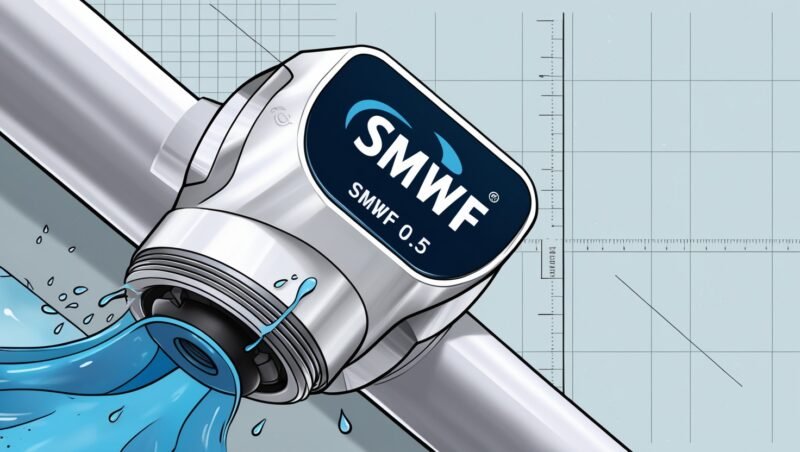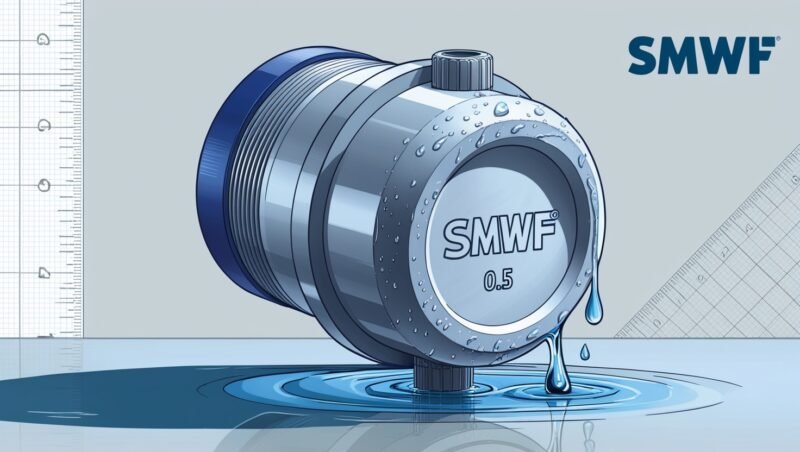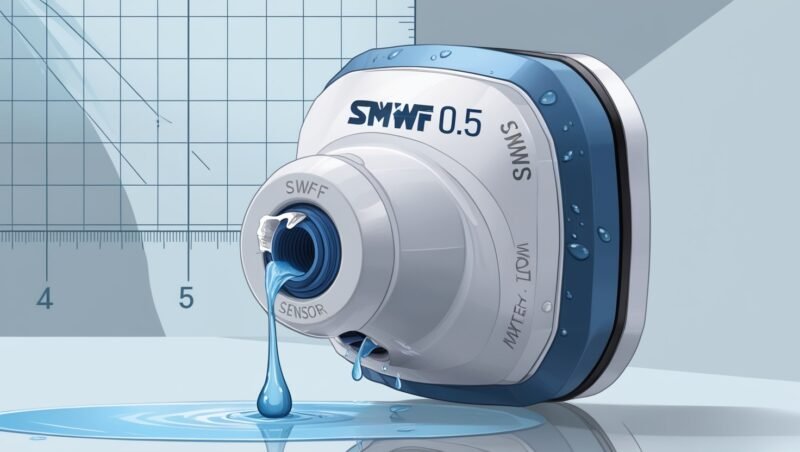Repairing a Leaking Water Flow Sensor SMWF 0.5: A Comprehensive Guide

Water flow sensors play a crucial role in monitoring and controlling the flow of water within various systems, including irrigation systems, water treatment plants, and industrial equipment. One such sensor, the SMWF 0.5, is a reliable device used in many applications. However, like all mechanical and electrical components, it is prone to wear and tear over time. Repairing a Leaking Water Flow Sensor SMWF 0.5 can cause disruptions in the system and lead to inefficiency. This article will provide an in-depth guide on how to repair a leaking water flow sensor SMWF 0.5, offering practical solutions, troubleshooting tips, and a clear understanding of how to restore the sensor to its optimal working condition.
Understanding the Water Flow Sensor SMWF 0.5
Before diving into the repair process, it’s essential to understand the basic functionality of the Repairing a Leaking Water Flow Sensor SMWF 0.5. This sensor is typically used to measure and monitor the flow of water through pipes in various systems. It is equipped with a mechanism that detects the speed and volume of the water passing through it. This information is then transmitted to the connected system, allowing for precise control and measurement.
The SMWF 0.5 model, in particular, is known for its reliability and accuracy. It can withstand different pressures and temperatures, making it suitable for a wide range of applications. However, over time, like any other sensor, it can develop issues such as leaks, which can lead to inaccurate readings and potential system failures.

Identifying a Leak in the Water Flow Sensor SMWF 0.5
The first step in repairing a leaking water flow sensor SMWF 0.5 is identifying that a leak exists. A leaking sensor can present itself in several ways. The most common signs of a leak are visible water pooling around the sensor or noticeable drops of water escaping from the sensor body. Additionally, you may notice irregular or fluctuating readings on your flow monitoring system, indicating that the sensor is not functioning correctly due to the leak.
Another way to identify a leak in the water flow sensor SMWF 0.5 is to inspect the connections. Over time, the seals and gaskets that hold the sensor in place can deteriorate, leading to leakage. If you observe water seeping from around the sensor’s fittings or mounting points, a leak is likely present.
Why a Leaking Water Flow Sensor SMWF 0.5 Should Be Fixed Immediately
A Repairing a Leaking Water Flow Sensor SMWF 0.5 can cause several issues within a system if left unattended. First and foremost, a leak can lead to inaccurate readings. If the sensor is unable to measure the water flow correctly, it can result in improper system functioning. For example, in an irrigation system, incorrect flow readings could cause over-watering or under-watering of plants, affecting crop health.
Secondly, a leak can lead to increased water wastage, especially in systems where water is metered or used in high volumes. The loss of water through a leak can result in higher utility bills and environmental concerns. In industrial applications, a leaking water flow sensor SMWF 0.5 may also cause equipment malfunctions, as the sensor’s data is used to control various mechanical processes.
Finally, ignoring a leaking water flow sensor SMWF 0.5 can cause further damage to the sensor or the surrounding components. The leakage could worsen over time, potentially damaging the sensor’s internal parts or even leading to complete sensor failure.
Step-by-Step Guide to Repairing a Leaking Water Flow Sensor SMWF 0.5
Repairing a leaking water flow sensor SMWF 0.5 is a task that requires some knowledge of sensor components and the proper tools. Below is a step-by-step guide to help you effectively repair the leak and restore the sensor’s functionality.
Step 1: Turn Off the Water Supply
Before attempting any repair work, the first thing you need to do is turn off the water supply to the system. This will prevent any additional water from leaking out while you work on the sensor. You should also drain any residual water from the pipes, if possible, to avoid any accidental spillage.
Step 2: Inspect the Sensor
Once the water supply is off, inspect the water flow sensor SMWF 0.5 closely. Look for any obvious signs of damage, such as cracks in the casing, worn-out seals, or loose fittings. Often, leaks in these sensors are caused by faulty seals, so check the O-rings or gaskets for wear and tear.

Step 3: Disassemble the Sensor (If Necessary)
If the leak appears to be coming from a part of the sensor that is sealed or enclosed, you may need to disassemble it to get a closer look. Carefully remove any screws or bolts that are holding the sensor in place. Make sure you keep track of each component as you remove them, as reassembly will require putting everything back in its original position.
When disassembling the sensor, be mindful of any delicate wiring or electronics inside. If your sensor is equipped with electrical components, make sure to disconnect the power supply before proceeding.
Step 4: Replace Damaged Seals or Gaskets
In most cases, a Repairing a Leaking Water Flow Sensor SMWF 0.5 will have a worn-out seal or gasket that is no longer providing a tight fit. If this is the case, you will need to replace the damaged part. Carefully remove the old gasket or seal and clean the area to remove any debris, dirt, or residue.
Once the area is clean, replace the old seal or gasket with a new one of the same size and material. Make sure the new seal fits properly and provides a tight, secure seal to prevent any future leaks.
Step 5: Reassemble the Sensor
After replacing the damaged seals or gaskets, carefully reassemble the sensor. Ensure that all components are correctly aligned, and that no parts are left loose. If you had to disconnect any wires or electrical components, reconnect them carefully, making sure that all connections are secure.
Step 6: Test for Leaks
Once the sensor is reassembled, it is time to test it. Turn the water supply back on and closely monitor the sensor for any signs of leakage. Check the area around the fittings, seals, and connections to ensure that no water is escaping.
If the sensor appears to be functioning properly and there are no signs of further leaks, your repair is complete. If the leak persists, you may need to repeat the inspection process to ensure that no other components are damaged.
Step 7: Monitor the Sensor Over Time
After repairing the leaking water flow sensor SMWF 0.5, it is essential to continue monitoring the sensor for the next few days or weeks. Check the system periodically to ensure that the sensor is providing accurate readings and that no new leaks have developed. This will help you identify any potential issues early on and avoid further complications.
Preventing Future Leaks in the Water Flow Sensor SMWF 0.5
While repairing a leaking water flow sensor SMWF 0.5 is a straightforward process, preventing future leaks is equally important. Regular maintenance and proper installation can significantly extend the life of your sensor and reduce the likelihood of future leaks.
Regular Inspections
Conduct regular inspections of the water flow sensor SMWF 0.5 to identify any early signs of wear or damage. Check the seals, gaskets, and fittings periodically to ensure that they are in good condition. By catching small issues early, you can prevent more significant problems from developing down the line.
Proper Installation
Ensure that the water flow sensor SMWF 0.5 is installed correctly. Follow the manufacturer’s guidelines for installation, and make sure that the sensor is fitted securely into place. Improper installation can lead to misalignment, which may cause leaks over time.
Keep the Area Clean
Dirt, debris, and sediment can accumulate around the water flow sensor SMWF 0.5 and cause damage to the seals or other components. Regularly clean the sensor and surrounding area to prevent any buildup that could lead to leaks.

When to Replace the Water Flow Sensor SMWF 0.5
While repairing a leaking water flow sensor SMWF 0.5 is often a viable solution, there are cases where replacement may be necessary. If the sensor is severely damaged, or if the internal components are no longer functioning correctly, it may be more cost-effective to replace the sensor rather than attempting a repair.
Additionally, if the sensor has reached the end of its lifespan and is prone to recurring leaks, replacing it with a new unit may be the best long-term solution.
Conclusion
Repairing a leaking water flow sensor SMWF 0.5 can be a simple and effective process, provided you follow the correct steps and use the right tools. By understanding the causes of leaks, properly inspecting the sensor, and replacing any damaged components, you can restore the sensor to its optimal functioning. Regular maintenance and proper installation practices will help prevent future leaks, ensuring that your water flow sensor continues to perform accurately and efficiently for years to come.
A leaking water flow sensor SMWF 0.5 should never be ignored, as it can lead to inaccuracies, water wastage, and system inefficiencies. By addressing the issue promptly, you can avoid costly repairs or replacements in the future, maintaining the smooth operation of your system.





